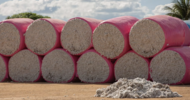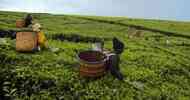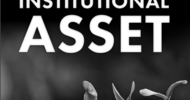Oxfam America| 29 January 2015
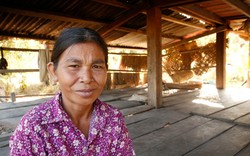 Who’s winning the struggle for land in Cambodia?
Who’s winning the struggle for land in Cambodia?
by Chris Hufstader
Despite pressure on indigenous communities, people are finding ways to defend their rights.
Up in the northeast corner of Cambodia’s Ratanakiri province, the forests are disappearing. As you drive along the major roads, you can see rows and rows of rubber and cashew trees, and cassava plants, stretching to the horizon. Everyone tells me this whole area used to be dense forest, and it’s hard for me to imagine now. Sometimes I can see little knobs of trees, at the top of steep hills, where the tall hardwoods still stand. These mini forests look lonely, but defiant.
This is the third time I have been to Ratanakiri since 2010. This time, I drive up into a little spur of Cambodia jutting to the east hard on the Vietnam border, only accessible by crossing the Se San river on a rickety makeshift ferry/barge pushed by boats with outboard motors. Even here, the plantations are everywhere.
The development pressures on the indigenous people – Tompoun, Charai, Ka Chok, and Kreung – are changing their lives, not entirely for the better. With few land titles, and investors with deep pockets making deals for the land with government officials, the indigenous people are being shoved aside as Chinese and Vietnamese companies move in, bulldoze their forests and fields, with little warning, discussion, or compensation. “A company came here, started bulldozing, and no one could say anything. We thought we could not question any decisions made at the top,” one villager in a place called In explains.
One 47-year-old widow named Chhou Chhoul from In says she lost her one-hectare (about 1.5 acres) rice field, her only means of growing any food, when a Vietnamese company called Hoang Anh acquired it from the government to plant rubber trees. I asked her what it was like, to suddenly learn she has no field. She seems unsure what to respond to a stranger. Finally she just says, “It hurts.”
These changes and sudden loss of lands for indigenous people have far-reaching implications. It is not just a matter of livelihood, income, and food — the forests are sacred, it is where people worship. Each community has a spirit forest, which they protect, and other areas where they forage for fruit, tap trees for resin to sell to lacquer producers, and collect bamboo shoots and rattan for producing handicrafts. The indigenous communities also manage lands where they rotate their rice and vegetable fields, and maintain burial grounds. They also reserve forest land for future generations. All are essential for their cultural and economic survival. “I want the next generation to have all these,” one ethnic Charai farmer in a village called Taing Mlue tells me. “I don’t want to see anyone invading these lands.”
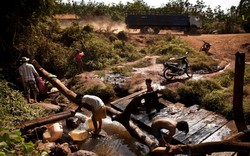
More people, more pressure
Dam Chanthy, who I met five years ago when I first came to Ratanakiri, says there are more and more people moving into the province, and more pressure on indigenous people to sell their land. But she also says that the level of knowledge about land rights in the indigenous communities is also changing: Chanthy and the organization she directs called the Highlander Association, and several other groups funded by Oxfam have been training villagers in their rights and negotiation skills. One 30-year-old man from In tells me the training “built my confidence, and taught me about the law, the rights of indigenous people, and that villagers should not be afraid of the companies.”
Support from the Highlander Association and four other Cambodian NGOs helped In and 16 other communities file a formal complaint to the International Finance Corporation (part of the World Bank) which loaned Hoang Anh $16.4 million. The IFC’s ombudsman’s office is considering the case now. Villagers I met with at In said the process is confidential and did not want to comment on it, but they are hopeful. “If the resolution goes well, I hope to get my land back,” says Chhoul. Another younger man who did not want me to use his name says, “I believe the complaint process will help our community at the negotiation table with the company, and find a solution for both sides.”
Chris Hufstader has been working for Oxfam America since 1998. He writes about Oxfam America’s programs in West Africa, Asia, and Latin America.

Chhou Chhoul, 47, says a Vietnamese company took her rice field for a rubber plantation without compensating her; she hopes to get it back through a World Bank complaint process. Photo: Chris Hufstader/Oxfam America
by Chris Hufstader
Despite pressure on indigenous communities, people are finding ways to defend their rights.
Up in the northeast corner of Cambodia’s Ratanakiri province, the forests are disappearing. As you drive along the major roads, you can see rows and rows of rubber and cashew trees, and cassava plants, stretching to the horizon. Everyone tells me this whole area used to be dense forest, and it’s hard for me to imagine now. Sometimes I can see little knobs of trees, at the top of steep hills, where the tall hardwoods still stand. These mini forests look lonely, but defiant.
This is the third time I have been to Ratanakiri since 2010. This time, I drive up into a little spur of Cambodia jutting to the east hard on the Vietnam border, only accessible by crossing the Se San river on a rickety makeshift ferry/barge pushed by boats with outboard motors. Even here, the plantations are everywhere.
The development pressures on the indigenous people – Tompoun, Charai, Ka Chok, and Kreung – are changing their lives, not entirely for the better. With few land titles, and investors with deep pockets making deals for the land with government officials, the indigenous people are being shoved aside as Chinese and Vietnamese companies move in, bulldoze their forests and fields, with little warning, discussion, or compensation. “A company came here, started bulldozing, and no one could say anything. We thought we could not question any decisions made at the top,” one villager in a place called In explains.
One 47-year-old widow named Chhou Chhoul from In says she lost her one-hectare (about 1.5 acres) rice field, her only means of growing any food, when a Vietnamese company called Hoang Anh acquired it from the government to plant rubber trees. I asked her what it was like, to suddenly learn she has no field. She seems unsure what to respond to a stranger. Finally she just says, “It hurts.”
These changes and sudden loss of lands for indigenous people have far-reaching implications. It is not just a matter of livelihood, income, and food — the forests are sacred, it is where people worship. Each community has a spirit forest, which they protect, and other areas where they forage for fruit, tap trees for resin to sell to lacquer producers, and collect bamboo shoots and rattan for producing handicrafts. The indigenous communities also manage lands where they rotate their rice and vegetable fields, and maintain burial grounds. They also reserve forest land for future generations. All are essential for their cultural and economic survival. “I want the next generation to have all these,” one ethnic Charai farmer in a village called Taing Mlue tells me. “I don’t want to see anyone invading these lands.”

Villagers gather water and bathe in this stream outside an ethnic Charai village in northern Ratanakiri. Photo: Patrick Brown/Panos for Oxfam America
More people, more pressure
Dam Chanthy, who I met five years ago when I first came to Ratanakiri, says there are more and more people moving into the province, and more pressure on indigenous people to sell their land. But she also says that the level of knowledge about land rights in the indigenous communities is also changing: Chanthy and the organization she directs called the Highlander Association, and several other groups funded by Oxfam have been training villagers in their rights and negotiation skills. One 30-year-old man from In tells me the training “built my confidence, and taught me about the law, the rights of indigenous people, and that villagers should not be afraid of the companies.”
Support from the Highlander Association and four other Cambodian NGOs helped In and 16 other communities file a formal complaint to the International Finance Corporation (part of the World Bank) which loaned Hoang Anh $16.4 million. The IFC’s ombudsman’s office is considering the case now. Villagers I met with at In said the process is confidential and did not want to comment on it, but they are hopeful. “If the resolution goes well, I hope to get my land back,” says Chhoul. Another younger man who did not want me to use his name says, “I believe the complaint process will help our community at the negotiation table with the company, and find a solution for both sides.”
Chris Hufstader has been working for Oxfam America since 1998. He writes about Oxfam America’s programs in West Africa, Asia, and Latin America.







